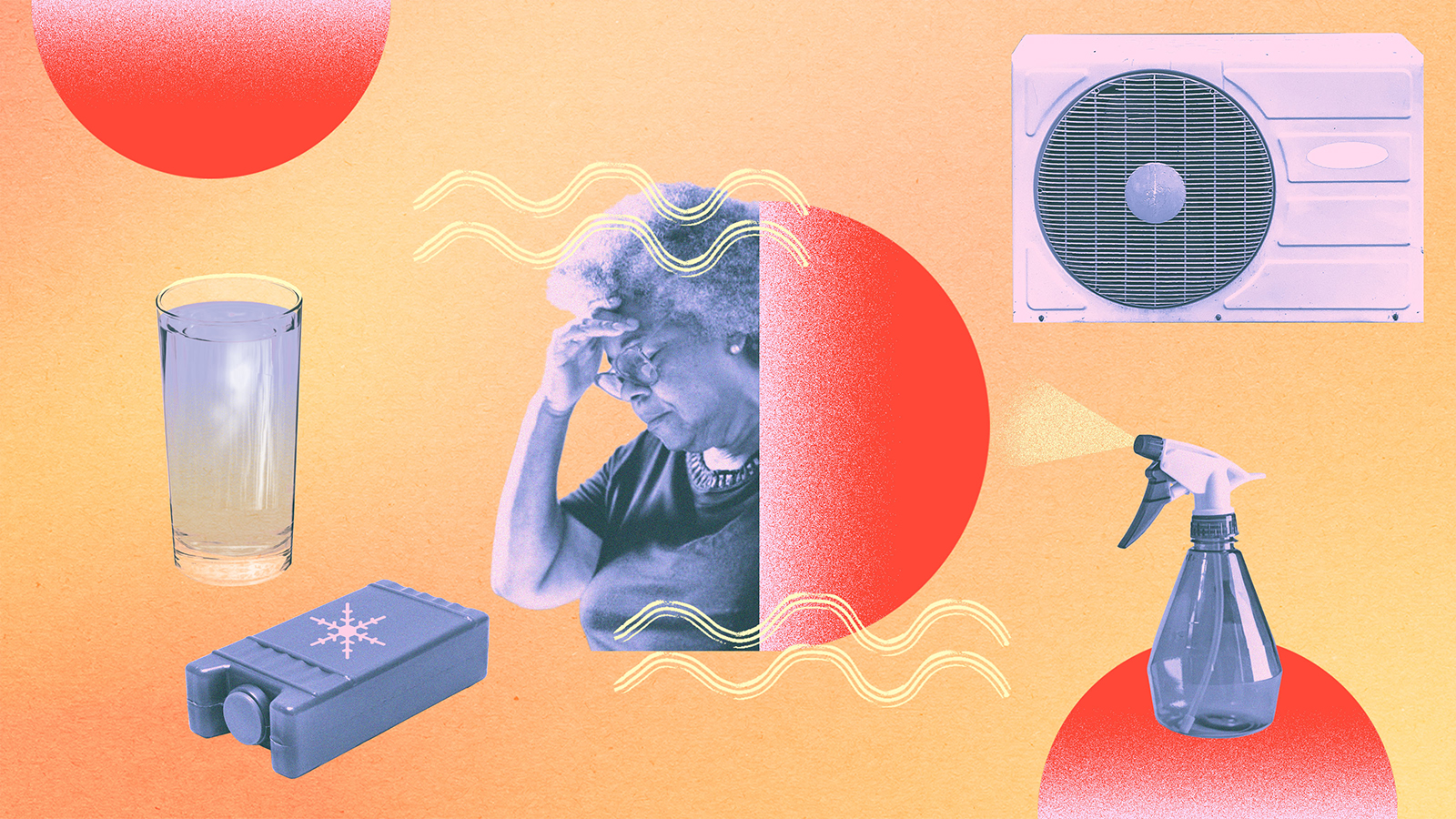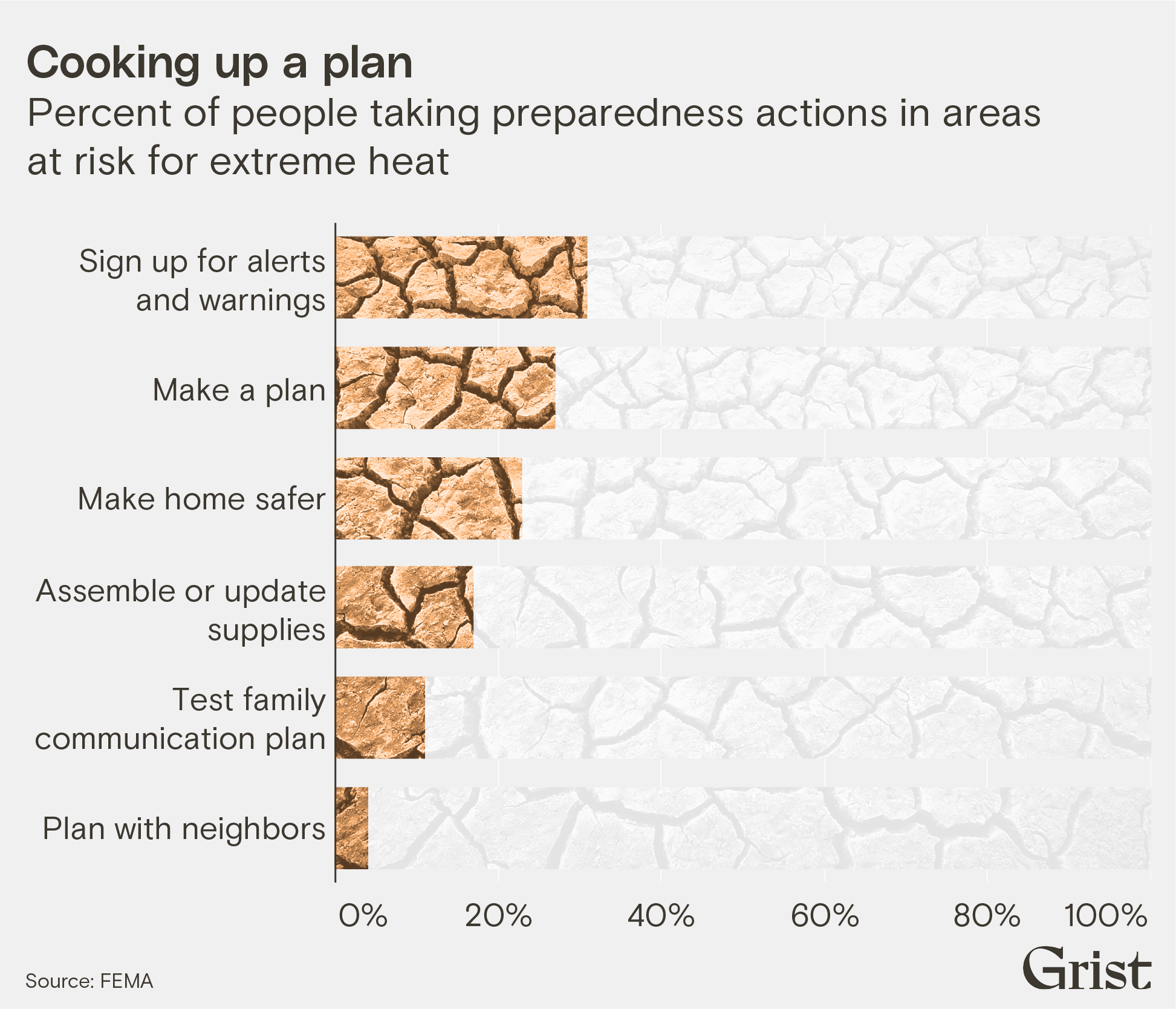Hello, and welcome to Week 8 of Record High. I’m climate solutions reporter Gabriela Aoun Angueira, and today we’re going to be introducing Grist’s new guide to keeping communities safe in extreme heat.
Scorching temperatures have affected nearly every part of the United States this summer. Just last week, heat indices in the Midwest skyrocketed, with Chicago reaching 120 degrees. Aid groups in the city raced to distribute frozen water bottles to the unhoused and box fans to elderly residents who lacked air conditioning. Meanwhile, farther south, San Juan, Puerto Rico, surpassed a heat record established in 1976.
If the past few months have made anything clear, it is that extreme heat is not just about the numbers on a thermometer. It impacts all aspects of our lives. To help readers navigate the new realities of life in this hotter world, Grist today published a comprehensive guide to keeping kids healthy, homes cool, workplaces safe, neighbors looked after, and our bodies protected in extreme heat.

Grist / Getty Images
We gathered advice from a dozen experts, from engineers to child psychologists, and distilled it into easy-to-implement tips. Along the way, a theme emerged: In so many ways, preparation eases the stress of managing a hotter world.
Firefighter and paramedic Kaipo Kelley told us that those who learn the signs of heat illness ahead of time can act more quickly to help themselves or someone else who is unwell, perhaps preventing heat exhaustion from turning into potentially fatal heat stroke.
For children whose lives are disrupted by heat waves, child psychologist Jennifer Louie said that creating a family plan of where to go and indoor activities to do when outside temperatures are dangerous can help assuage kids’ anxiousness.
At work, collaboratively deciding with managers and staff how to adjust routines on hot days, like by moving shifts to cooler hours or instituting more frequent breaks, sets a tone for prioritizing safety over productivity, said a representative from the Occupational Safety and Health Agency, or OSHA.
Home energy audits, whether completed by a professional or done yourself, can help identify the most efficient ways to seal and insulate homes before the heat hits and you have to crank the air conditioning, said Brett Little of the Green Home Institute.
And getting together with neighbors to identify who might be especially vulnerable in a heat wave — like the elderly, those with medical conditions, or folks without AC — and planning who will check on them ensures no one gets left behind, said Scott James, who formed his own neighbor network in his hometown of Bainbridge, Washington.
The tips we’ve compiled also include suggestions for supplies and resources to have on hand, like books for talking to kids about climate change and power banks for helping neighbors charge phones in a power outage. There are DIY ideas for keeping homes cold by building “swamp coolers” and for rapidly lowering the body temperature of someone who might have heatstroke.
In addition to the guide we published on the Grist site, look for easily shareable versions of all these tips, in English and Spanish, rolling out on our Instagram this week.
We need your help
In two weeks, Record High will look at the impact that extreme heat is having on travel and recreation — and we want to hear from you. Have you had outdoor sports canceled due to scorching temperatures? Travel plans scrapped or scuttled? Health impacts from exposure to high heat? Click here to share your experiences with us.
By the numbers
Although summers are expected to get even hotter in the coming years, few people in the United States are taking steps to prepare for extreme heat, according to FEMA’s 2022 National Household Survey on Disaster Preparedness. Just 17 percent of households say they have assembled supplies to deal with extreme heat, for example, and only 4 percent have made a plan with neighbors.

Data Visualization by Clayton Aldern
What we’re reading
Portland food trucks feel like ovens: There are more than 1,000 food trucks in Portland, Oregon, but as my colleague Joseph Winters writes, cooking in them in the summer heat is becoming unbearable. Some truck owners are turning off their grills, like a vegan chef who swapped out plant-based burgers and fries for a “cold menu” of chik’n salad and chips.Read more
Inflation is down, but not heatflation: The global price of olive oil is double what it was last year, our food and agriculture fellow Max Graham reports. That’s in part due to a yearlong drought and a hot spring in Spain that devastated the olive groves of the world’s largest olive oil producer. Fears are mounting that the country could run out of the culinary staple completely.Read more
Detained in deadly heat: An investigation by the Intercept found that the U.S. Border Patrol has been detaining migrants in Arizona in outdoor pens in temperatures as high as 114 degrees. Now, the outlet is reporting that the practice has been in place far longer than previously known, and that officials have said it violates a court order related to detentions.Read more
How much heat can our bodies really handle?: As the world heats up, scientists and doctors are studying what happens to the body under heat stress, and how much global heating human bodies will be able to withstand. A New Yorker writer subjected himself to a 104-degree heat chamber at 40 percent humidity to better understand it himself.Read more
In a sweltering Dubai, residents hit the beach at night: In the United Arab Emirates, prime beach time is now midnight. The New York Times visited a beach where lifeguards work late shifts, spotlights illuminate the waters, and children play on floaties during the only hours it’s bearable to be outside.Read more

